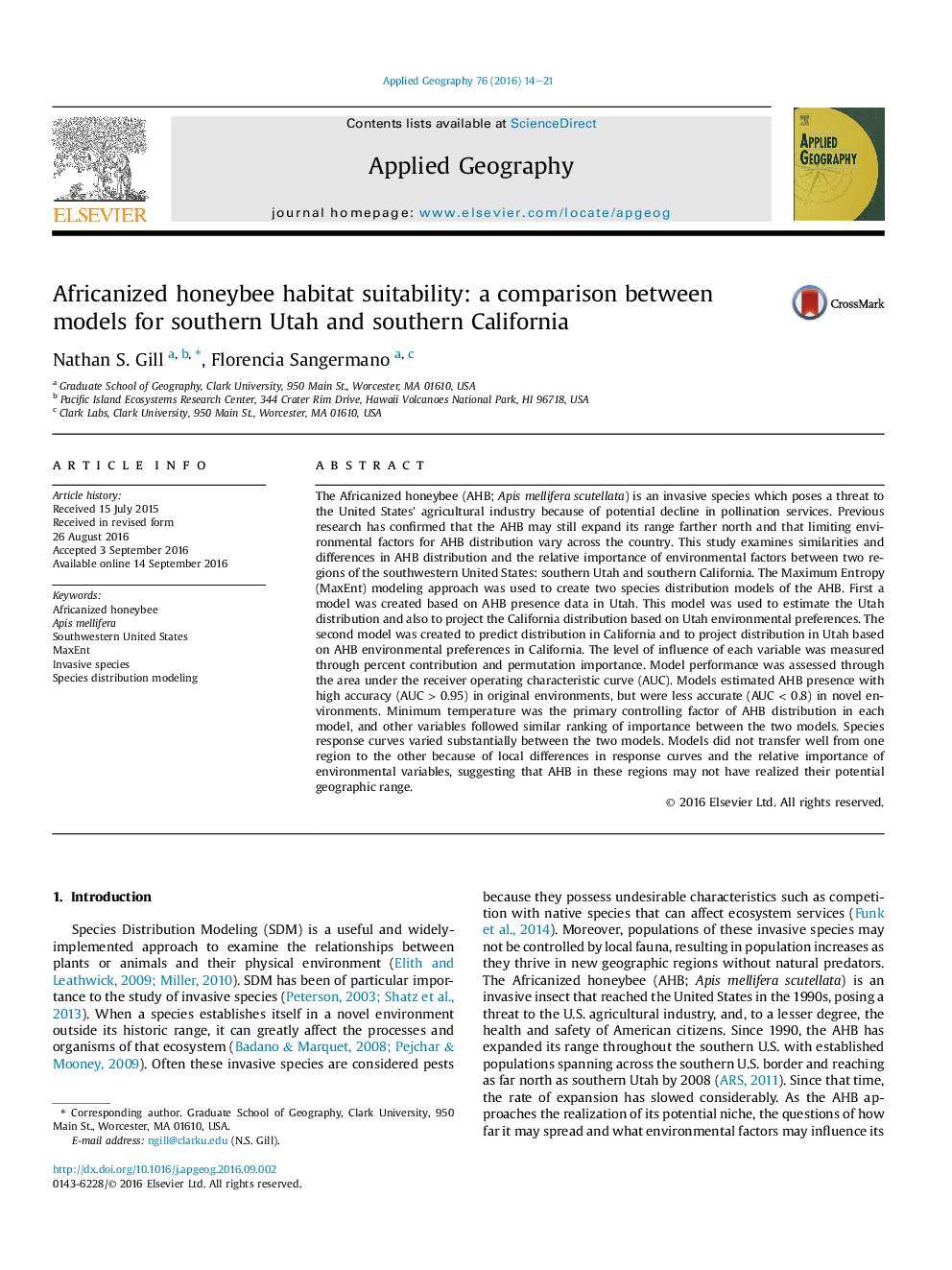| کد مقاله | کد نشریه | سال انتشار | مقاله انگلیسی | نسخه تمام متن |
|---|---|---|---|---|
| 6458530 | 1421041 | 2016 | 8 صفحه PDF | دانلود رایگان |
- We modeled AHB distribution in two regions of the southwestern United States.
- We evaluated the influence of bioclimatic factors on AHB habitat suitability.
- We identified limitations of AHB range for each relevant bioclimatic factor.
- Models yield similarities in variable importance, but differences in suitability.
- Model differences may suggest the AHB has not realized its potential range.
The Africanized honeybee (AHB; Apis mellifera scutellata) is an invasive species which poses a threat to the United States' agricultural industry because of potential decline in pollination services. Previous research has confirmed that the AHB may still expand its range farther north and that limiting environmental factors for AHB distribution vary across the country. This study examines similarities and differences in AHB distribution and the relative importance of environmental factors between two regions of the southwestern United States: southern Utah and southern California. The Maximum Entropy (MaxEnt) modeling approach was used to create two species distribution models of the AHB. First a model was created based on AHB presence data in Utah. This model was used to estimate the Utah distribution and also to project the California distribution based on Utah environmental preferences. The second model was created to predict distribution in California and to project distribution in Utah based on AHB environmental preferences in California. The level of influence of each variable was measured through percent contribution and permutation importance. Model performance was assessed through the area under the receiver operating characteristic curve (AUC). Models estimated AHB presence with high accuracy (AUCÂ >Â 0.95) in original environments, but were less accurate (AUCÂ <Â 0.8) in novel environments. Minimum temperature was the primary controlling factor of AHB distribution in each model, and other variables followed similar ranking of importance between the two models. Species response curves varied substantially between the two models. Models did not transfer well from one region to the other because of local differences in response curves and the relative importance of environmental variables, suggesting that AHB in these regions may not have realized their potential geographic range.
Journal: Applied Geography - Volume 76, November 2016, Pages 14-21
